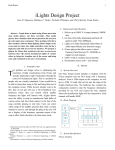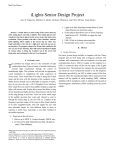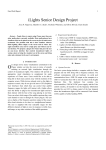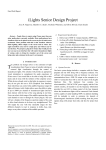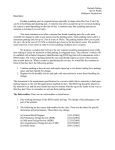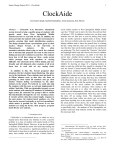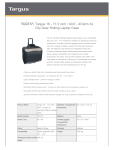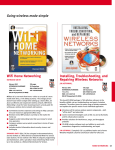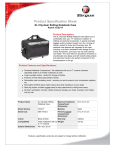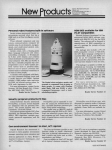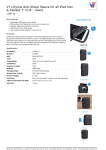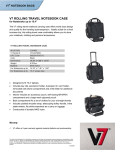Download Requirements Specification
Transcript
14 October 2004 Advisor: Professor Soules Barron Shurn Daniel St. Clair Web-Enabled Caller Identification Requirement Specification Background: The need to stay connected in the world today is more evident then ever. Whether for business or for pleasure, when a consumer is on the road, they are going to miss some important phone calls, which could lead to a loss of a business deal or vital personal call. Most homes and businesses are subscribers to the Caller Identification feature provided by their local phone company, but there is no way to view missed calls until the consumer returns from their trip and uses the Caller ID device. If a Caller ID device was web-enabled, a consumer could check their missed calls and stay in contact with things even while they are on the road. A web-enabled Caller ID would be easy to configure, and easy to use. It would allow businessperson and homeowner alike to log onto the device to view, delete and even download the current calls logged. This is the requirements specification for a web-enabled Caller ID device that allows access to the call log via an Internet connection. The device should be easy to use and relatively inexpensive to compete with traditional Caller ID devices. The Deliverables: 1. A working prototype of the device without packaging. 2. The following manufacturing artwork: a. Wiring artwork b. Parts list c. Test specification, noting specifics about configuration via the web 3. User’s manual with setup and configuration instructions. Principle of Operation: The Caller ID device will be placed in a discrete location with access to the phone line, Ethernet line to connect to the network, and an outlet for power. The group will attempt to produce the device in such a way that power consumption is minimal so possibly battery power can be used instead of using a power outlet. The user will be able to configure the device via the local area network. This will allow the consumer to use the Caller ID device while they are out of the area to view, delete and download their incoming call log. User Interface: The user interface will be strictly presented on the embedded system microcontroller. All functions will be handled via the web-interface. The device will have no physical visual output, nor input. Input/Output: The phone line connected to the device will be there to decode the caller’s information just as standard Caller ID devices work currently. After the first ring, Caller ID information is sent across the line as a stream of binary. Another input to the device will be through the LAN where the consumer will be able to use all the features of the Caller ID device. The output of the device will be viewed remotely through the LAN connection. It will consist of a web page with the functions of the device. The User’s Manual: The user’s manual will explain how to connect the device to the user’s phone line and local area network. This will include configuring the device with a username and password to be accessed securely. Acceptance Tests: The device in its completed stage should operate free of errors. There should be no need for maintenance once the product has been manufactured. Testing will involve a thorough examination to verify that the user embedded server operates correctly. Also adequate testing is required to ensure that caller ID information is decoded correctly during an incoming call. Product Costs: The final product cost should be competitive enough to rival standard Caller ID devices, but given that the web-enabled Caller ID device has special features that a typical Caller ID device does not provide, the cost will be slightly higher. These approximate prices are reflected in the chart below for production costs: Manufactured Cost: EEPROM Casing AVR Micro-controller Power Supply PCB Total $5 $10 $10 $20 $30 $75



